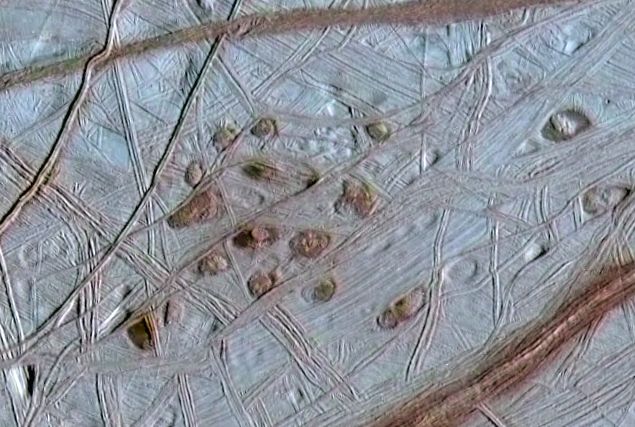Explanation: Europa, one of Jupiter's large Galilean moons, may well posses an ocean of liquid water hidden beneath its icy surface -- and so holds the tantalizing possibility of life. In this image, constructed with data recorded in 1996 and 1997 by the Galileo spacecraft, Europa's characteristic surface ridges and cracks are seen along with domes and dark reddish spots called lenticulae from the Latin word for freckles. The freckles are about 10 kilometers across and are believed to be blobs of warmer ice from below that have gradually risen through the colder surface layers, analogous to the motions in a lava lamp. If the freckles do represent material from deeper ice layers closer to the hidden ocean, future space missions to investigate Europa's interior could sample the relatively accessible freckles rather than drill through Europa's potentially thick ice shell.
1999 2000 2001 2002 2003 2004 2005 2006 2007 2008 2009 2010 2011 2012 2013 2014 2015 2016 2017 2018 2019 2020 2021 2022 2023 2024 2025 |
Январь Февраль Март Апрель Май Июнь Июль Август Сентябрь Октябрь Ноябрь Декабрь |
NASA Web Site Statements, Warnings, and Disclaimers
NASA Official: Jay Norris. Specific rights apply.
A service of: LHEA at NASA / GSFC
& Michigan Tech. U.
|
Публикации с ключевыми словами:
Europa - Jupiter - Galileo - Jupiter's Moons - Европа - Юпитер - галилеевы спутники
Публикации со словами: Europa - Jupiter - Galileo - Jupiter's Moons - Европа - Юпитер - галилеевы спутники | |
См. также:
Все публикации на ту же тему >> | |
